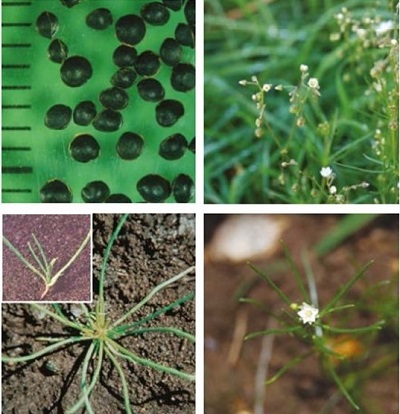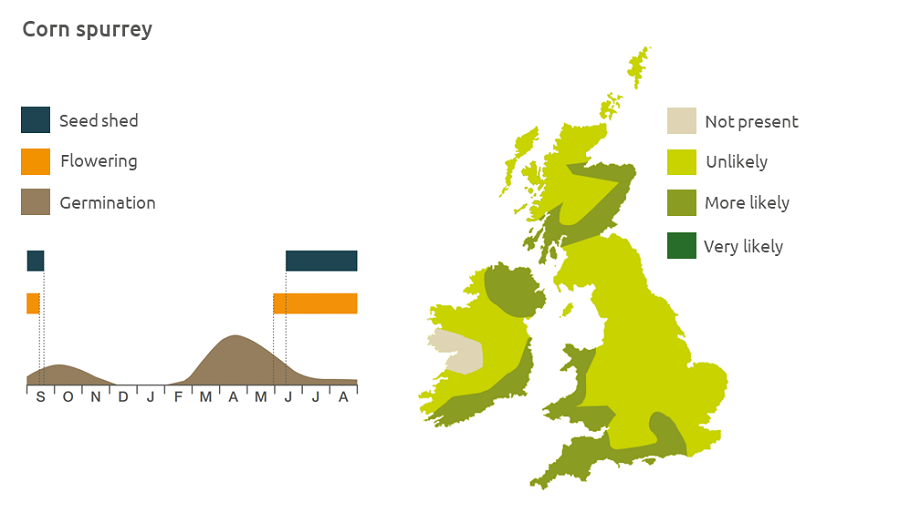- Home
- Knowledge library
- Distribution and biology of corn spurrey in the UK
Distribution and biology of corn spurrey in the UK
Corn spurrey is an annual weed that can be a particular problem for cereals. Find out how to identify and control it.
Overview
Corn spurrey (Spergula arvensis) can be a troublesome weed of cereals, because of its dense mats of growth. Two generations can occur in one season because plants can set many seeds within 10 weeks of germinating and just a fortnight after flowering. There is a persistent seedbank. Seeds can be transported by birds or mammals, or agricultural machinery.
- It has value to biodiversity
Description
It is an annual weed, growing to 60 cm tall, with white star-like flowers. The very narrow leaves are in groups of four.
Key features
Young plant: The cotyledons and first true leaves are similar, both needle-shaped
Plant: The leaves are needle-shaped and arranged in whorls.

Location and life cycle

Geographic distribution
Corn spurrey occurs in cereal fields or other cultivated land up to an altitude of 450 m.
Soil type
It occurs most frequently on light soils and surface-leached sandy soils with a low pH.
Seed statistics
- Seed longevity: Longest ever recorded over 170 years
- Germination depth: 3.9 cm
- Seed weight: 1 mg
- Seeds/flower: 25
- Seeds/plant: 1,000–10,000
Management
Raising the pH over time will reduce corn spurrey and encourage the competitiveness of the crop.
For advice on herbicides, please speak with your agronomist or adviser.
When was this information last updated?
This page is based on content from the encyclopaedia of arable weeds publication. Since it was first released in 2008, the publication has been redesigned several times but not revised. However, it remains a good foundation for general information on the distribution and biology of weeds.

